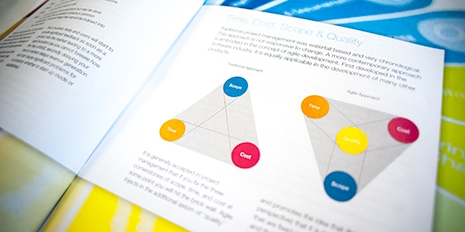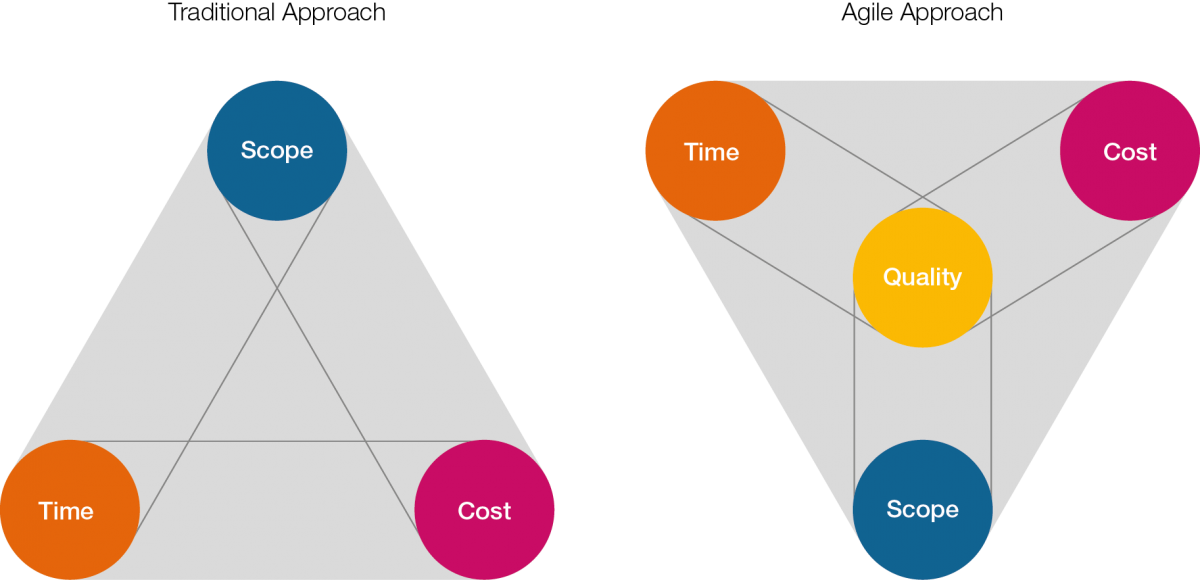
Like any activity within your business your product development and innovation activity should deliver on your strategy, goals, aspirations, and plans. To do this it is important that it is structured in a proactive way and where possible is not just reactive to external conditions.
We have developed a document that sets out an approach to plan, manage, and execute your innovation to improve your results and provide a structure that everyone understands and is engaged with. It provides some guidance about the right level of focus at each level to ensure that the both the strategy end and the implementation end are delivering what they need to.
We don’t assert ownership over all of the approaches and as efficient magpies will always pick up anything that is shiny and looks like it would do a great job. Our approach incorporates many ideas from a wide range of fields.
Many businesses approach managing innovation the same way they would conventional project management. The problem is that developing new products and services differs substantially from building a bridge or putting in a new IT system. Innovation needs a different approach to that of conventional project management because:
This list is not exhaustive, but it is important to recognise that you are dealing with a lot of unknowns and the variables are subject to change constantly. Gearing your structure and processes to acknowledge this is the best approach.
`A goal without a plan is just a wish’ ~ Antoine de Saint-Exupery
Planning is one of the hardest things to execute when you are doing a lot of innovation. With so many elements likely to change it will challenge even the most well laid plans. To meet this challenge it is important to have a strategy and plan which is capable of surviving change and helping to provide direction where it occurs.
A plan should be strategic and focussed into the areas that are most important to your business and can provide information back when a strategy is no longer relevant or going to work.
It should help to ‘accumulate knowledge’ within the business. This will create value for your products and services by improving their relevance, accuracy, or benefits provided to your customers, users, and stakeholders.
Your plan must be well communicated, be respected by all, and be constantly reviewed to ensure it remains relevant to your business and is accurate.
To create innovation plans that can deliver your strategy but survive change it is important to introduce levels to your planning, reporting and implementation.
We have developed an approach, which has four levels: Strategic (Portfolios); Programme (Plans), Objectives (Projects), Tasks (Implementation).
These levels are important so that you are focussing on the right stuff at the right level. For example discussing the granular detail of a task is not the right level for a governance group or a board unless it affects the strategy that has been set.
The levels also are time based. You need to guide your longer-term plan, but execute critical tasks to achieve your short to medium term objectives. This approach guards against being caught unaware of disruptive approaches or technology that could affect your business.
|
Level |
Timeframe |
Focus |
Key Function |
|
Strategic Portfolio |
2-5 years |
Strategic |
To align activity with the company strategy and ensure a consistent vision |
|
Programme plans |
90 days |
Planning |
To release priority work from the portfolio and provide milestones that are achievable in the near term |
|
Objective Work Plans |
20 days |
Tactical |
Provide a strong view of the workflow required to deliver on near term milestones |
|
Task Management |
5-10 days |
Implementation |
Focussed on what needs to be done within the next 1-2 weeks. |
Changing the way your work is managed and briefed is essential for the management function to be efficient and effective. This simple hierarchy is one we have used on complex R&D programmes.
This approach is both top down and bottom up, as there is a place for both perspectives. In fact both perspectives are essential for the completion of work in a timely fashion.
"If you cannot measure it, you cannot improve it." Lord Kelvin
We have always recorded and reported on our use of time relative to its place in the development process. This is important to understand, learn from what you do, and implement improvements to your process to become more efficient.
As a company that sells services we have to record time well, but we have not looked at it as a compliance tool, but rather, a learning one. Imagine if you could produce 50% more innovation in your business?
There are many approaches to reporting, the key is reporting on what matters to identify the problems that you might face in advance and planning to get around these. Budgets are important, but monitoring your progress against milestones, deliverables, understanding risk is equally important.
A reporting structure should be established at the outset and should not be less than two weekly. Our approach is to run budget reports weekly (predominantly around resource usage) to ensure that we understand where work is at and how we are progressing against the plan.
Reporting should consist of the following:
This can be a chore, but if set up correctly can be 15-30 minutes of reporting a week and will provide a very clear view of where things are at and what may need to be done to either correct a problem or change tack to prevent one from occurring.
This idea of managing scope is not a matter of saying ‘she’ll be right’. It is an approach where you agree on what is critical (mental note – not everything can be critical) and focus on those things. The MoSCoW approach is effective when paired with a milestone review.
There are other approaches, but the general tenet is that everything cannot be at the same level of priority and that there must be an agreed, effective way of delivering on time, to budget and at a high quality level.
One of the reasons that this is even more important in product development is that time to market is a factor that cannot be underestimated.
This is twofold; firstly end users will start to provide significant feedback as soon as a product hits the market leading to a more rapid evolution (as you cannot foresee how this may unfold); secondly delaying you time to market delays revenue generation and can cause significant problems for a company whether in start up mode or established.
Traditional project management was waterfall based and very chronological. This approach is not responsive to change. A more contemporary approach is embodied in the concept of agile development. First developed in the Software industry, it is equally applicable in the development of many other products.

It is generally accepted in project management that if you fix the three cornerstones of scope, time, and cost at some point you will hit the brick wall. Agile injects in the additional axiom of ‘quality’ and promotes the idea that (from a business perspective) that it is time, cost and quality that are fixed (as business critical factors) and that scope is the key variable that can be managed within the programme.
We use a variety of tools, each with their own benefits and drawbacks. Experience suggests that there is no one tool that can deliver what we need. We tend to pick the tools that benefit each aspect of the process.
Comments
Post new comment